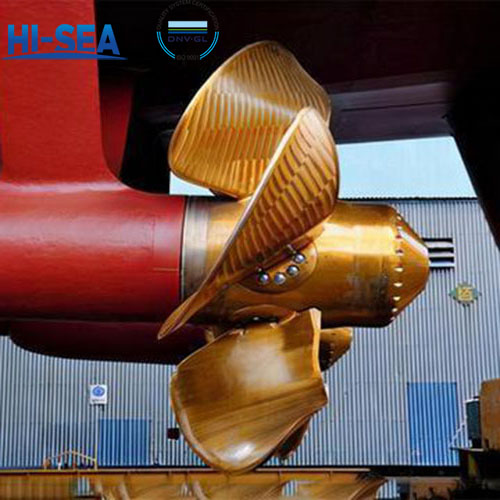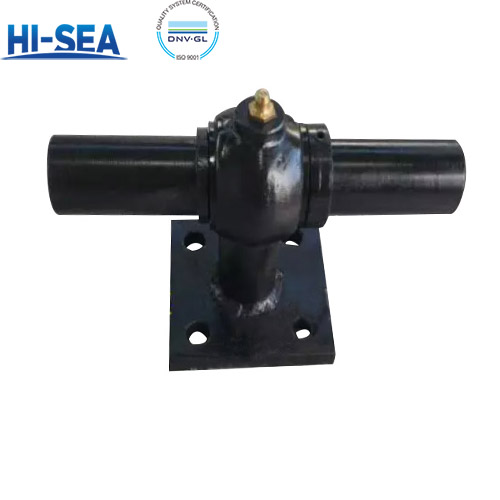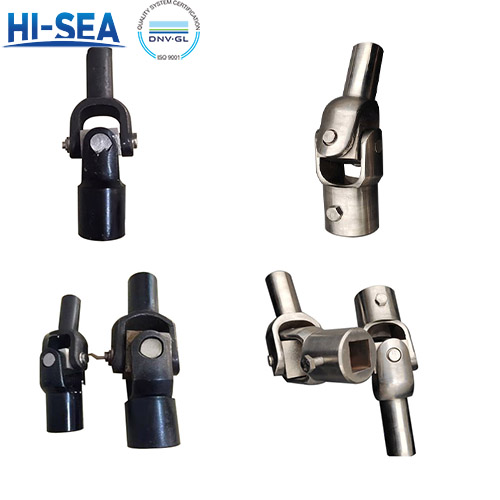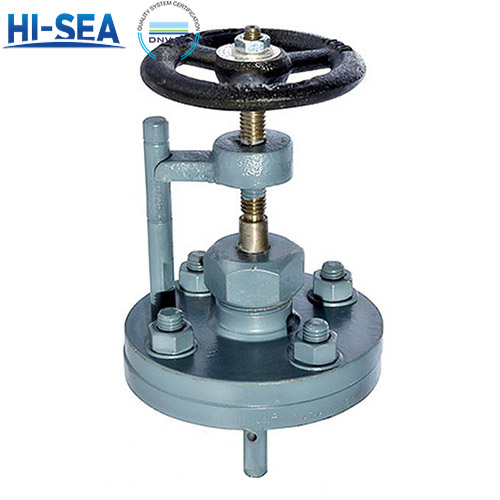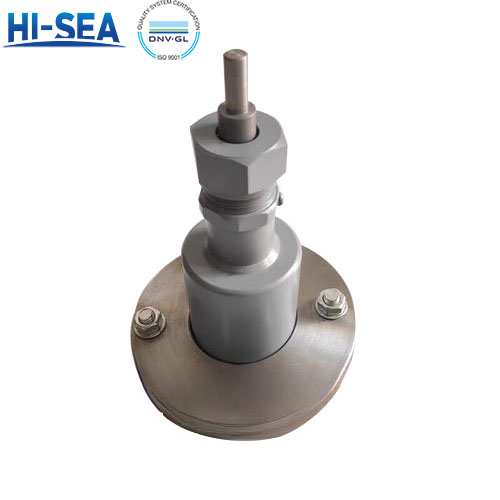
Structure Improvement of Marine Propeller
Marine propellers are important power devices for ships, which drive the ship forward by propelling the water flow. With the development of the shipping industry and continuous innovation in ship design, the structure of ship propellers is also constantly improving and optimizing. The structural improvement of marine propellers can significantly enhance their performance, efficiency, and durability.
Improve the efficiency and propulsion of propellers, reduce fuel consumption and emissions.
Optimize the design of propellers to reduce noise and vibration, and improve navigation comfort.
Increase the durability and corrosion resistance of the propeller, and extend its service life.
Introducing intelligent control technology to improve the precision and adjustability of propellers, adapting to different navigation conditions and requirements.
Overview
1. Dual flow propeller
A propeller that can be used as both a ship propulsion propeller and for other similar applications. It includes several blades, among which several blades are fixed on the outer wall of a concentric water cylinder, and there are several inner blades between the inner wall of the water cylinder and the hub. The inner propeller blades inside the above-mentioned water cylinder have a spiral direction opposite to that of the propeller blades. This utility model adopts the structure of setting a water cylinder in the vortex zone of the propeller hub, and there are several inner blades with opposite rotation direction to the blades between the inner wall of the water cylinder and the hub.
When in use, when the propeller rotates, it pushes the water backwards, while the water in the water cylinder flows forward, thereby improving the low-pressure water flow in front of the propeller, limiting the vortex in the hub area, strengthening the wake behind the propeller, increasing the reaction force of the propeller, and improving its effectiveness to increase the speed of the ship.
2. Efficient and powerful propellers for ships
A highly efficient and powerful propeller for ships, mainly composed of a hub and multiple propeller blades. The surface of the propeller blades hitting water is provided with convex lines and fishtail patterns, and is made into a rough surface as a whole; The blade is made of metal material, and a layer of tire rubber surface is compounded on the water striking surface of the metal blade. The tire rubber surface is provided with convex lines and crow's feet, and is made into a rough surface as a whole.
It has the characteristics of simple structure, convenient and reliable use, increased ship propulsion power when the propeller is used, usually increasing the thrust of the propeller by 15-30%, and achieving a silent effect.
3. Annular combined propeller
The annular combined propeller consists of a hub, connecting blades (spiral blades), rotor, etc. Connecting blades (spiral blades) directly connect the hub to a ring, and set up rotors radiating outward based on the ring. The more rings set up, the more rotors added. This type of propeller can have more rotors set up within the same rotation radius, resulting in greater thrust and pulling force. This propeller can be used for airplanes, helicopters, and ships.
4. Controllable pitch propeller device
A variable pitch propeller device comprising a hollow hub, wherein a number of blades are uniformly distributed radially on the hollow hub, and the blade connecting end is a short shaft that passes through the bearing hole on the peripheral wall of the hub and extends into the inner cavity of the hollow hub. The inner cavity of the hollow hub is provided with a transmission structure that can simultaneously drive the short shafts of each blade extending end to rotate and adjust the working angle of the blades.
This device not only allows ships to adjust the working angle of propeller blades according to different working conditions, thereby improving the utilization rate of engine output power and engine service life, but also has a simple structure and low cost.
5. Structure and Manufacturing Method of High Efficiency Marine Propeller
A high-efficiency ship propeller structure and its manufacturing method, comprising: providing a propeller body, the material of which is selected from lightweight metal materials; Perform ceramic like treatment on the surface of the propeller blank to form a ceramic layer; Coating the surface of this type of ceramic layer to form a low resistance layer.
This method can provide mechanical properties such as lightweight, high strength, corrosion resistance, and low friction for propellers, with the characteristics of energy saving, low cost, and extended service life.
6. Marine high-speed energy-saving bidirectional force propeller
A high-speed energy-saving bidirectional force propeller for ships, the structure of which is to set a propeller sleeve below the water surface at the bow of the ship, and its inlet leads from the bow to the outside of the ship; A propeller is installed near the bow of the ship within the propeller sleeve. After the propeller sleeve extends a certain distance inside the ship, it extends to the left and right sides to form the left and right branch pipes of the propeller sleeve. The left and right outlets of the left and right branch pipes respectively lead to the outside of the ship from the left and right sides of the ship.
By optimizing the propeller setting method and installation position on the ship, its propulsion efficiency has doubled compared to the existing one-way force propeller, and it can travel twice as far and twice as fast in the same amount of time.
7. Marine copper alloy propeller and tail shaft brushing device
A ship copper alloy propeller and tail shaft matching device, four small platforms at the lower part of the working platform are welded to the matching bracket, and the bottom plate is connected to the working platform. The bottom plate is connected to the matching bracket through channel steel, and the jack is placed in the middle of the bottom plate. The working platform has fastening screw holes, light reducing holes, and a shaft hole in the middle. The four columns that make up the matching bracket are welded to the channel steel. When the utility model is in operation, the propeller is installed on the working platform, and the tail shaft is lifted and placed in the middle hole of the propeller. The propeller is fixed in place, and the tail shaft moves up and down under the action of a jack to perform brushing between the propeller and the tail shaft.
Reasonable structure, sturdy and reliable, simple operation, and long service life can not only improve the accuracy of propeller and tail shaft brushing, but also enhance the efficiency of propeller and tail shaft brushing. This device has been widely used for the matching of 57000T, 53100T, 53500T, 53800T, 16500T propellers and their tail shafts.
8. A high-efficiency and energy-saving propeller for ships
A highly efficient and energy-saving propeller for ships, comprising a hub and propeller blades connected to the hub. The hub is provided with at least one communication hole connecting the front end annular surface of the hub and the rear end annular surface of the hub; The aperture at the rear end of the connecting hole is larger than the aperture at the front end; There is a groove between the two connecting holes on the front annular surface of the hub; The width of the groove increases from one end to the other, and the depth decreases; There are weight reduction holes on the hub; The width of the blade surface is greater than the width of the blade back. The present invention provides a highly efficient and energy-saving marine propeller. When the propeller is in operation, water at the high-pressure area in front of the hub can directly enter the low-pressure area behind the hub through the connecting hole, connecting the two areas. The pressure in the low-pressure area is increased, and the pressure between the two areas is basically balanced, greatly improving the efficiency of the propeller; The horn shaped shape at the rear end of the connecting hole allows the water flowing out of this hole to collide with the straight water flow, forming a water flow that acts on the inclined plane of the blade along the edge, thereby forming an auxiliary force to drive the propeller blade to operate.
For more marine propeller information, kindly please click here.

